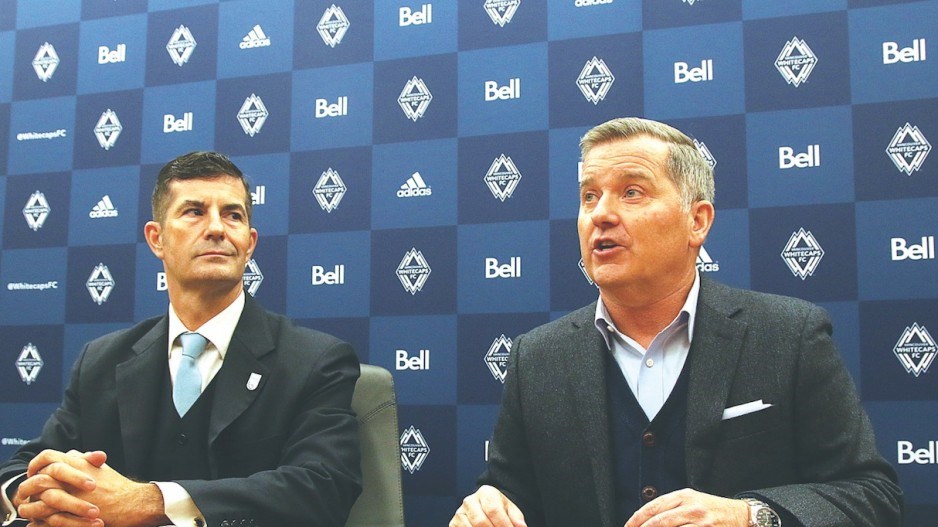Three of the Vancouver Whitecaps’ biggest moves since the team finished last in Major League Soccer’s (MLS) Western Conference in October have been in the executive suite.
The biggest move in the front-office shakeup was arguably in December, when co-owner Jeff Mallett took over the post of executive chairman from John Furlong. Mallett’s status sitting on several MLS committees heightens his ability to communicate team needs.
Mallett has long been active with the club, but the new position increases his presence and underscores his attentive, hands-on approach to the club’s strategy and vision.
Greg Kerfoot, Steve Nash and Steve Luczo also own shares in the team, although their stakes are not public. Mallett told Business in Vancouver that he and Kerfoot each approve key club decisions.
“The two Steves are not as active,” Mallett said, before revealing that Kerfoot has the largest financial interest in the team. “We always say that we’re here to help Greg.”
After the Whitecaps’ November hiring of sporting director Axel Schuster, a former executive at German Bundesliga teams, Mallett spearheaded a drive to “quietly” seek a CEO. Schuster would report directly to the ownership group – or more specifically to Mallett and Kerfoot – as would the CEO.
Discretion was needed, Mallett said, because most of the people whom Mallett and others approached to potentially be the team’s CEO were under contract with other clubs.
A list of 40 candidates was shortened to 15, then to eight and then four, and finally, the owners each ranked former AS Roma CEO Mark Pannes as their top pick, Mallett said.
The decision was finalized when Pannes followed up and stressed to the owners how much he wanted the job.
“Mark kind of bopped us in the nose during the end of the process and said, ‘I want this job. This is the job I can do really well at,’” Mallett said on January 7 after announcing the hire.
Pannes earned his stripes in the 1990s during a 10-year stint as New York Knicks chief marketing officer and vice-president of marketing.
Mallett called Pannes a “five-tool player,” because of that marketing experience combined with CEO experience at AS Roma, communications experience, ticketing experience and the financial experience of managing funds totalling US$1.5 billion at HSBC Private Bank in London for athletes and institutions in sports.
“We’ve never had this ever at the club,” Mallett said. “There’s not one component that Mark hasn’t owned growing up in his career, or overseen, across the board.”
Further executive change may yet take place.
Mallett said that executives such as COO Rachel Lewis, vice-president of sales Colby Fackler and vice-president of brand and fan engagement Mikkel Strojer met with Pannes to answer questions behind closed doors and to provide data sets during the hiring process.
“We’ll have Mark get some time to settle in with each one of them, and then at that point he’ll make assessments of what changes, if any, he’d like to make,” Mallett said.
Pannes said that, mere hours into his tenure, he has no big changes planned but that it is not his nature to merely be an observer.
One thing he wants to do is boost attendance and bring back the days when the North American Soccer League’s Whitecaps in 1983 could draw fans in the 50,000-range for games against marquee teams such as the New York Cosmos.
Lowering ticket prices, however, might not be the answer.
Pannes favours what he called “right-pricing” seats, adding that different incentives are needed to stimulate sales for specific seat classes, and that prime seats are less cost sensitive than others.
His preferred strategy to increase attendance is to have a winning product on the field – something that is primarily Schuster’s job.
The biggest move in that direction came in December when the team reportedly paid a club-record US$6 million fee to sign Canadian striker Lucas Cavallini.
One of the team goals Mallett outlined is to supply half of the 2026 Canadian World Cup team, and the Cavallini signing could help the club succeed.




